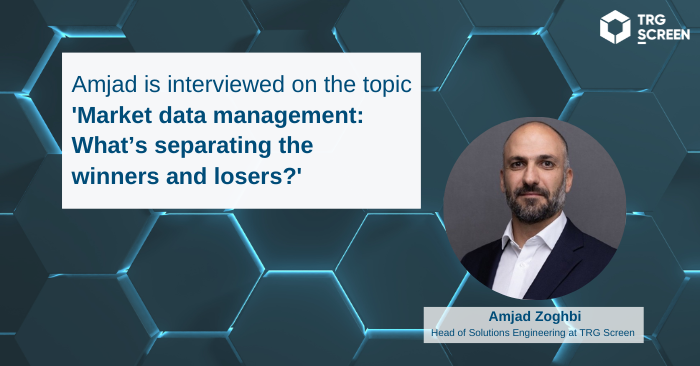This is the second article in a series on the future of market data subscription management – read the first article here. We have summarized 4 articles from this series in an e-book.
Data sources are multiplying
Data sources are multiplying, as are the policies on how they can be used, leaving market data teams trying to outrun an avalanche of commercial complexity as they strive to optimize their use of this vital information.
Firms large and small are seeking a competitive edge in alternative market data, alongside the incessant supply from traditional sources – a headache for managers trying to track who in their organizations is using the data and how.
There is a lot at stake. Global spend on market data and information hit a record $44.3 billion in 2024, according to Burton-Taylor International Consulting, while a report by San Francisco-based Grand View Research valued the global alternative data market at nearly $11.65 billion in 2024. Analysts expect “alt-data” to undergo a compound annual growth rate of up to 55% between 2022 and 2030.
In this environment, financial institutions need complete transparency on their market data landscape – spend, usage, contracts, compliance and invoices – if they are to stay on their feet as the avalanche roars in. They also need best practice embedded in the many processes involved in managing the commercial side, such as reporting on the cost of data consumption.
Some firms still try to manage market data with spreadsheets or generic procurement tools. Yet, even tier-1 banks with dedicated vendor management software can benefit from having their subscriptions run by an expert team with cutting edge technology available from a managed service.
Here are some of the challenges facing firms that may not realize there is a more rewarding route to peace of mind – rather than waiting anxiously for the rumble in the valley.
Contract Management
“How can we most effectively manage service requests? Our current workflow isn’t as bulletproof as it could be.”
If service requisition is managed on email, it is not uncommon for some requests to fall through the cracks. Best practice is to have an automated workflow within the usage/cost inventory itself.
This creates an audit trail that tracks all requests, ensures they are actioned accordingly and automatically updates the inventory. It also means that any unused licenses are transferred to new staff - avoiding unnecessary costs.
TRG Screen’s integrated solution has best practices embedded. What’s more, usage rights can be housed in the inventory system so data managers know exactly who is using what, and how.
“Sometimes, for compliance reasons or to meet an urgent client need, we procure market data without going through our internal procedures. How risky is this?”
The risk of not having access to data can seem greater than that of bypassing internal processes. There are several implications when market data purchasing isn’t coordinated centrally.
One relates to contract usage rights; the risks are overpaying and underpaying. A firm could end up paying for data it already has the rights to use. On the other hand, the firm might not be paying for data it is using, which could also be a costly error.
Every contract generates an invoice and proper controls need to be in place to ensure the invoice is processed and reconciled in accordance with the usage rights. There is also a risk that the invoice goes astray, with negative consequences.
“We don’t catch all of our contract renewals in time. Renewal dates are easy to miss and we roll into another year without realizing.”
If you don’t know the renewal date, contracts can roll over indefinitely whether or not they are needed. Many in the industry would agree contracts should be challenged annually.
TRG Screen’s Optimize Spend alerts users to renewal dates with sufficient time to review the use case, while its managed service provides the expertise needed for a detailed review.
Cost Transparency
“We find that reconciling invoices isn’t as straightforward as it should be. How can we be sure they are accurate and that we’re not overpaying?”
Firms are generally charged for market data on a per usage basis. An up-to-date inventory of data usage is the only way to verify that the correct amount is paid. Otherwise, the firm is dependent on the vendor and the accuracy of their records.
Maintaining details and accurate inventory, with visibility and control over usage, is best practice – paying an invoice without it is like jumping into the abyss.
“My team are drowning in requests for transparency on costs and detailed reports on market data usage. It’s proving tricky to gather that information in a timely manner.”
At worst, the business requires visibility over their committed market data subscription spend. At best, they want to know what services are driving the most value. It takes great expertise to put that kind of reporting together – and significant time as stakeholders want cost and consumption measured even by desk or user.
But it doesn’t have to be like this! TRG Screen’s Optimize Insights can create BI-powered customizable dashboards that can capture any nuance of a client’s market data cost landscape.
Keeping up with the exchanges
“Exchange policies change all the time and we are struggling to keep up. What’s the risk and how do we get a handle on things?”
Keeping up with exchange policy changes and vendor updates can seem a relentless mission – demanding expertise au fait with the intricacies of the use case. But firms of any size can be caught out. They may unwittingly overlook when a market data subscription becomes fee-liable, risking a fine.
However, such problems are avoidable if the institution has a tool such as PEAR, part of TRG Screen’s Exchange Management platform. PEAR monitors 700 exchange documents a day, and updates license fees and data charged across 29 exchanges to ensure users are up to date.
Specialist Skills
“I’m trying to recruit people to help manage our market data subscriptions. We invest in training them on relevant systems, only to see them join a competitor within a year.
New recruits need to be trained in the many processes involved in market data management. To implement them successfully, they need to understand the systems, processes, the vendors and know the use cases. This makes training them time-consuming and expensive.
Remember! There is an alternative way to leverage specialist market data management expertise and capabilities without having to resource a full team in-house. This is market data subscription management managed services.
Look out for the next article in this series, or learn more by reading ‘Managing the market data estate: TRG Screen’s Nadine Scott has the answers’.
Want to learn more on our Managed Service offerings for all your market data management challenges?







